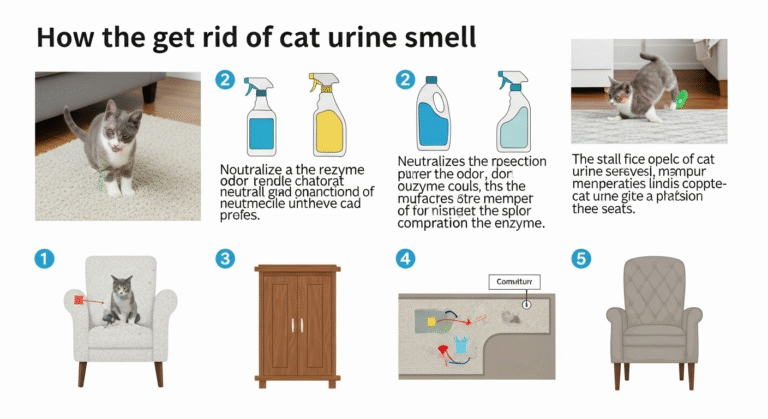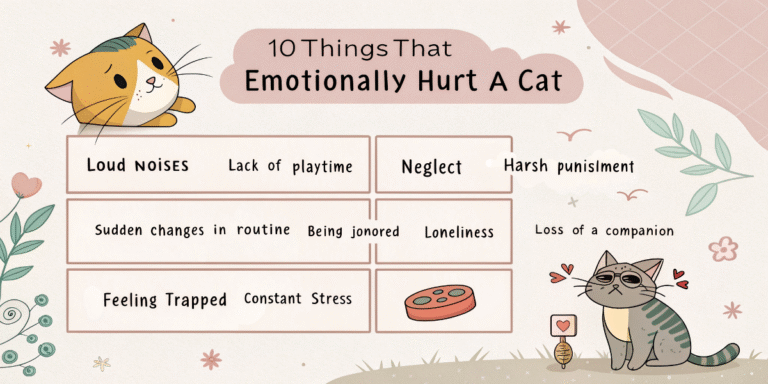How to Win Your Cat’s Heart: 7 Proven Ways to Build Unbreakable Trust
How to Win Your Cat’s Heart: 7 Proven Ways to Build Unbreakable Trust
There’s nothing quite like the moment when a previously skittish cat finally chooses to curl up in your lap. After weeks—sometimes months—of patient effort, that first purr of contentment feels like winning the lottery. But here’s the thing about cats: they don’t give their trust away easily, and honestly, that’s what makes earning it so incredibly rewarding.
If you’re reading this, chances are you’re in the trenches right now. Maybe you’ve got a new rescue who spends most of their time under the bed, or perhaps your own cat still treats you like a suspicious stranger after months of cohabitation. Trust me, I’ve been there—and I’ve learned that winning a cat’s heart isn’t about grand gestures or expensive treats. It’s about understanding their world and showing them, through consistent actions, that you’re someone worth trusting.
Quick Takeaways for Busy Cat Parents:
- Respect their independence – Let them come to you, don’t force interactions
- Create a safe haven – Every cat needs a space that’s completely theirs
- Stick to routines – Predictability equals security in cat language
- Play together daily – Interactive play builds bonds and reduces stress
- Learn their body language – It’s like having a secret conversation
- Move slowly, speak softly – Match their energy, not your own
- Reward the good stuff – Positive reinforcement works wonders
1. Honor Their Inner Wildcat: Respecting Independence
Here’s something that took me years to fully grasp: cats aren’t broken dogs. They’re perfectly designed solitary hunters who happen to have decided we’re worth keeping around. Your cat’s need for independence isn’t personal—it’s hardwired into their DNA from thousands of years of survival.
Real talk: I used to think my cat didn’t like me because she’d walk away when I tried to pet her. Turns out, she was just telling me she wasn’t in the mood. Once I started letting her approach me on her terms, our relationship completely transformed.
The magic happens when you stop chasing and start allowing. Instead of following your cat around trying to initiate contact, try this: sit quietly in the same room, maybe read a book or scroll your phone. Don’t look directly at them (that’s considered rude in cat culture). Give them space to observe you and decide when they want to interact.
Pro tip: When your cat does approach, resist the urge to immediately start petting. Let them sniff your hand first, maybe even head-bonk you if they’re feeling social. This simple act of patience communicates respect in a language they understand.
2. Create Their Personal Fortress: The Safe Space
Every cat needs a place where they can disappear and feel completely secure. Think of it as their personal panic room—somewhere they can retreat when the world feels overwhelming, whether that’s because of unexpected guests, loud noises, or just the general chaos of daily life.
The best safe spaces are elevated (cats feel safer when they can survey their territory from above) and tucked away from high-traffic areas. A cat tree in a quiet corner, a cozy spot on top of a bookshelf, or even a cardboard box on a desk can work wonders. The key is making it exclusively theirs.
What to avoid: Don’t put their safe space near appliances that make sudden noises (dishwasher, washing machine) or in areas where they might be cornered. Cats need multiple escape routes to feel truly secure.
Make it inviting with a soft blanket or their favorite toy, but don’t be hurt if they ignore your carefully curated setup and choose the cardboard box it came in instead. Cats have their own interior design preferences, and sometimes simple is better.
3. Become Predictably Awesome: The Power of Routine
Cats are creatures of habit in the best possible way. They find comfort in knowing what comes next, and when you provide that predictability, you’re essentially telling them, “Hey, this is a safe place where good things happen regularly.”
This goes beyond just feeding times (though consistent meal schedules are crucial). Think about incorporating routine into all your interactions. Maybe you have a gentle petting session every morning while you drink your coffee, or perhaps you play with them at the same time each evening before dinner.
Personal experience: My cat learned that the sound of my alarm means breakfast is coming. Now she actually comes running when it goes off—not because she’s hungry, but because she knows what to expect. That predictability has made her noticeably more relaxed throughout the day.
Even small routines matter. Something as simple as saying “good morning” to your cat in the same gentle tone each day creates a positive association. They begin to anticipate these interactions, and anticipation builds trust.
4. Speak Their Language: Interactive Play
Here’s where many cat owners miss a huge opportunity. Play isn’t just about burning energy—it’s about communication. When you engage in interactive play, you’re essentially saying, “I understand you’re a predator, and I respect that part of you.”
The key word here is interactive. Your cat doesn’t want to play alone while you watch TV; they want you to be part of the hunt. Whether you’re wielding a feather wand, laser pointer, or fishing rod toy, you’re not just providing entertainment—you’re building a partnership.
Game-changer tip: Always end play sessions with a “kill”—let them catch and carry the toy. This satisfies their hunting instincts and leaves them feeling accomplished rather than frustrated.
Aim for at least 10-15 minutes of interactive play daily. You’ll be amazed at how much this strengthens your bond. When your cat sees you as their hunting partner, you’ve crossed a major threshold in their trust.
5. Crack the Code: Understanding Cat Body Language
Learning to read your cat’s body language is like being handed the translation key to a foreign language. Once you understand what they’re telling you, everything changes.
Start with the basics: a tail held high like a flag usually means they’re feeling confident and happy to see you. A tail tucked under their body suggests they’re scared or anxious. When they show you their belly, it’s not necessarily an invitation to pet (like with dogs)—it’s a sign they trust you enough to be vulnerable around you.
But here’s the real magic: the slow blink. Often called “cat kisses,” this gentle closing of the eyes is their way of saying, “I trust you completely.” And here’s the beautiful part—you can return the gesture. Try slowly closing your eyes while looking at your cat, then opening them. Many cats will blink back, creating a moment of genuine connection.
Breakthrough moment: The first time my initially fearful rescue cat slow-blinked at me, I nearly cried. It was her way of saying she finally felt safe. Now we have slow-blink conversations across the room—it’s become our special thing.
Pay attention to their ears too. Forward-facing ears indicate interest and engagement, while flattened ears usually mean they’re stressed or scared. The more you observe, the better you’ll become at reading their emotional state.
6. Match Their Energy: The Art of Moving Slowly
Cats live in a different tempo than we do. While we’re rushing around trying to get things done, they’re moving through the world with deliberate grace. When you match their energy level, you’re speaking their language.
This means approaching them with slow, deliberate movements rather than quick gestures. It means speaking in a soft, gentle voice instead of the loud, enthusiastic tone we might use with dogs. Think of it as shifting into “cat mode”—everything becomes more intentional and calm.
Try this: When you want to interact with your cat, sit or crouch down to their level, extend your hand slowly, and let them come to you. Avoid looming over them—it can feel threatening from their perspective.
The slow blink technique I mentioned earlier works perfectly here too. Combine it with soft speech and gentle movements, and you’re essentially sending a message that says, “I’m not a threat, I’m a friend.”
7. Reward the Good Stuff: Positive Reinforcement That Works
Cats are incredibly intelligent, but they’re motivated differently than dogs. While a dog might work for praise alone, cats usually need something more tangible—and that’s perfectly fine.
The key is finding what your individual cat values most. Some cats go crazy for treats, others prefer a gentle petting session, and some just want a few minutes of interactive play. The trick is timing: reward the behavior immediately so they can make the connection between what they did and the good thing that followed.
Fun fact: A cat’s flavor preferences are often influenced by their mother’s diet while nursing. If you’re struggling to find the right treat, this might explain why your cat turns their nose up at certain flavors!
Look for opportunities to reward positive behaviors: coming when called, using their scratching post, or even just being in the same room as you. These small acknowledgments add up to big changes in your relationship.
What to reward: Any behavior that shows trust—approaching you, sitting near you, making eye contact, or even just staying relaxed in your presence. These moments might seem small, but they’re building blocks of a stronger bond.
The Journey, Not the Destination
Building trust with a cat isn’t a sprint—it’s a marathon. Some cats might warm up to you within days, while others might take months or even longer. The timeline doesn’t matter; what matters is the consistency of your approach and the genuine respect you show for their nature.
Remember, every cat is an individual with their own personality and history. A cat who’s been mistreated might need extra patience, while a naturally confident cat might be ready to trust more quickly. The strategies I’ve shared work because they honor what all cats need: safety, respect, and the freedom to choose their own level of interaction.
The beautiful thing about earning a cat’s trust is that once you have it, you really have it. Cats don’t give their affection lightly, but when they do, it’s genuine and lasting. That purr, that head bonk, that moment when they choose your lap over any other spot in the house—these aren’t just cute behaviors. They’re declarations of trust, and there’s nothing quite like them.
Your Turn: Share Your Cat Trust Stories
I’d love to hear about your own experiences building trust with your feline friends. What breakthrough moments have you had? Which strategies worked best for your cat? Drop a comment below and let’s create a community of cat lovers supporting each other through this amazing journey.
And if you’re still in the early stages of building trust, be patient with yourself and your cat. Trust takes time, but it’s absolutely worth the wait. Your future self—and your cat—will thank you for the patience you show today.







